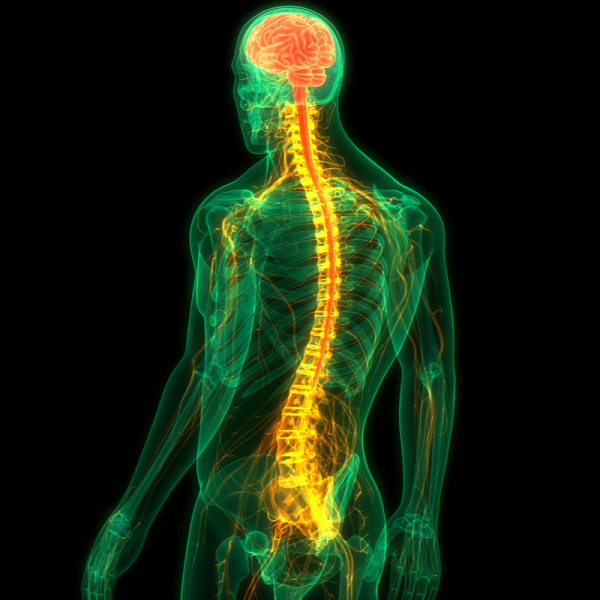
What is syringomyelia?
Syringomyelia is a disease of the spinal cord that occurs rather rarely and is either congenital or acquired. Only about eight in 100,000 people develop syringomyelia, and men are usually more often affected than women. Typical of syringomyelia are single or multiple cavities in the spinal cord filled with cerebrospinal fluid, which are called syringes. The syringes develop mainly in the cervical spine or the upper thoracic spine. In some cases, a syrinx can also grow in the lower brain stem. Doctors then speak of a syringobulbia.
What are the different forms of syringomyelia?
Doctors distinguish between congenital and acquired syringomyelia. Congenital syringomyelia occurs in 50 to 80 per cent of all cases and is caused by a malformation during embryonic development, a so-called Chiari malformation. In this case, the cerebellum and the afterbrain are displaced in the direction of the spinal canal, as a result of which the cerebrospinal fluid can no longer flow freely. Acquired syringomyelia, on the other hand, can be caused by a severe spinal cord injury, as a result of inflammation of the meninges or by a tumour in the spinal cord.
What are the symptoms of syringomyelia?
If the syrinx enlarges over time, neighbouring nerve tracts can be squeezed or permanently damaged. This can cause various symptoms, which usually start with a reduced perception of temperature and pain, for example in the hands. Afterwards, further symptoms may occur, such as pain in the shoulder-arm area, disturbances in the emptying of the bladder and/or intestines, as well as sensory disturbances. In particularly severe cases, syringomyelia can also lead to paralysis, which can occur especially often in the legs. If syringomyelia is a congenital form, the first symptoms usually appear between the ages of 20 and 40.
How is syringomyelia diagnosed?
After taking the patient's medical history, the doctor will perform a physical neurological examination, which includes an examination of the reflexes as well as the muscle strength, for example of the arms and legs. If a syringomyelia is suspected, a magnetic resonance imaging (MRI) of the brain and spinal cord will be performed. A detailed MRI image shows the location and size of syringes.
How is syringomyelia treated?
Syringomyelia can be treated conservatively to relieve symptoms. In some cases, surgical intervention is also advisable. In most cases, the skull is opened up to the spinal cord. If the syringomyelia was caused by an accident, the vertebral arches are removed and the adhesions of the soft spinal cord membranes are loosened, so that the cerebrospinal fluid can flow away unhindered again.
| Pathogen | Source | Members - Area |
|---|---|---|
| Syringomyelia | EDTFL | As a NLS member you have direct access to these frequency lists |
| Hydrosyringomyelia | EDTFL | As an NLS member you have direct access to these frequency lists |
